Business Bureau
Agency for Cultural Affairs, Government of Japan
Special Trip to Experience Traditional Japanese
Culture and History in the Ancient Capital of Nara
In addition to visiting World Heritage Sites, National Treasures, and Important Cultural Properties, visitors to Nara can also experience various traditional crafts. This is an introduction to the charms of the ancient capital of Nara, together with the experiences of foreign tourists who participated in the monitor tour.
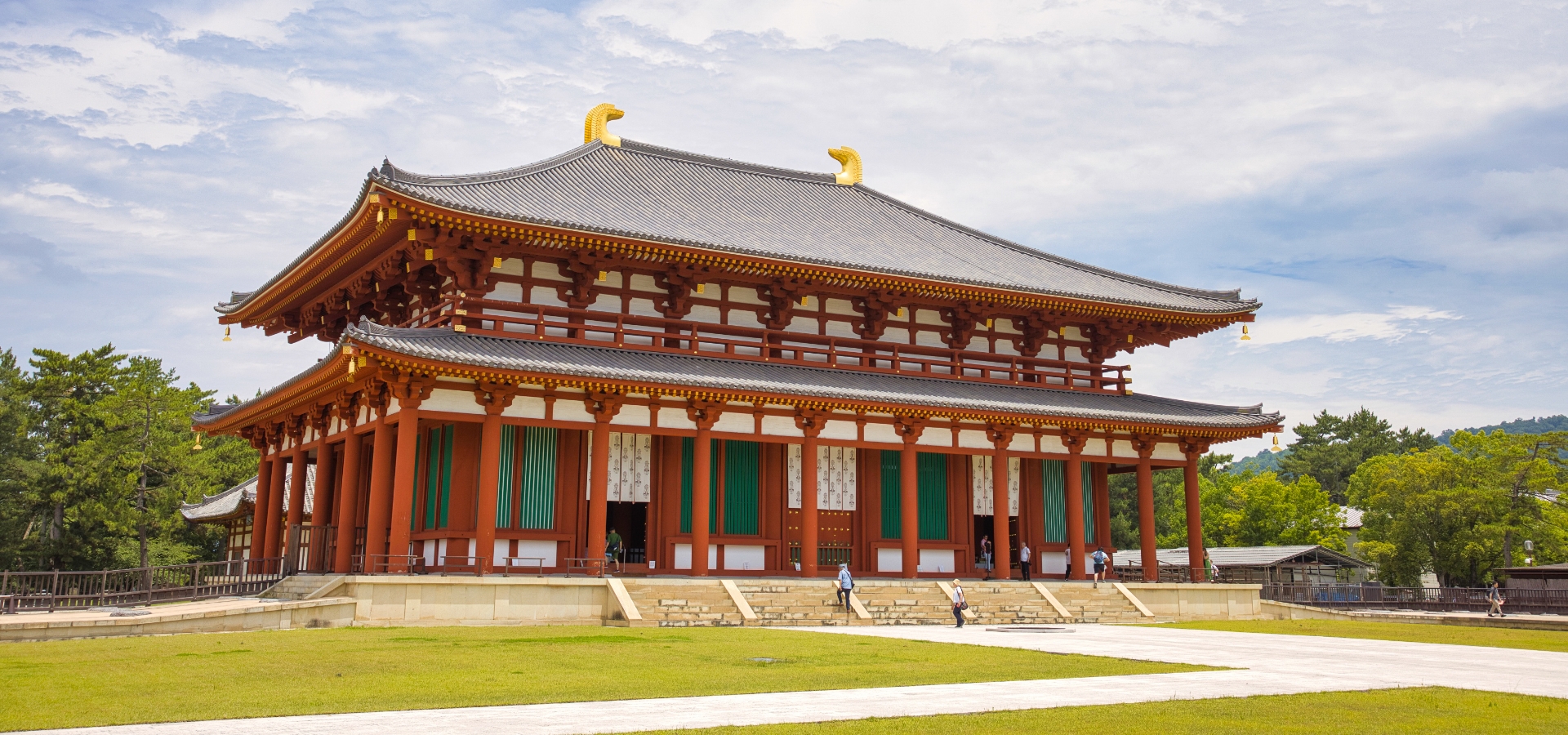
Chukondo (Central Golden Hall) of Kohfukuji Temple
Kohfukuji Temple, the head temple of the Hosso sect and a cultural asset of
the ancient capital of Nara
Founded in 710, Kohfukuji Temple flourished as the family temple of the Fujiwara clan and during the Heian Period was known for magnificent buildings and precincts. However, several fires within the grounds of the temple have destroyed halls, pagodas, and treasures. The site was restored after each fire thanks to the efforts of monks and other people connected to the temple. The site is currently undergoing construction work to restore the temple grounds to its original style from during the Tempyo Period. The Chukondo (Central Golden Hall) was restored in 2018 and offers a glimpse of the temple’s former grandeur. Visiting in the evening creates an even more solemn atmosphere. The five-story pagoda, declared a National Treasure, is also undergoing major repairs for the first time in 120 years. According to the temple monks, the repairs are being carried out to help preserve the knowledge and techniques used in reconstructing such important cultural assets.
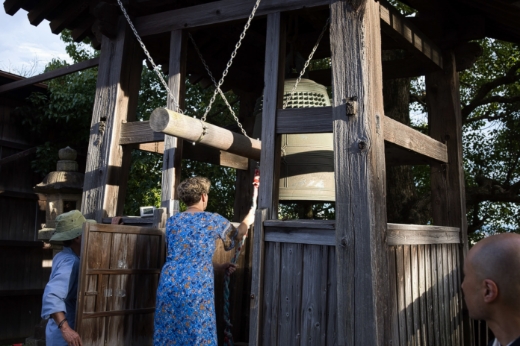
The bell of Kohfukuji Temple still rings on time every day and serves as a clock for local residents. This tour offers a unique chance to experience ringing the bell. “It was a refreshing and wonderful experience,” says Vanessa, who expressed deep satisfaction with the experience. “I felt tense to have the responsibility of ringing the bell that sounds throughout the area.”
Access Kohfukuji Temple via Visual Guide!
Visitors to the temple grounds can enjoy a high-definition virtual reality experience of Kohfukuji Temple. The visual guide allows visitors to see the inside of the three-story pagoda, which is not usually open to the public, and the temple grounds as they existed in the past — all on your smartphone! Please take this opportunity to experience the history and philosophy of Kohfukuji Temple, as well as the spirit that underlies its reconstruction.
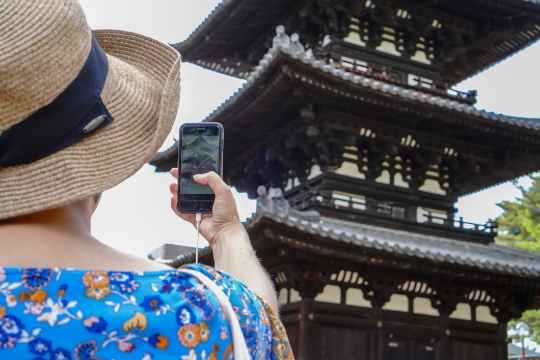
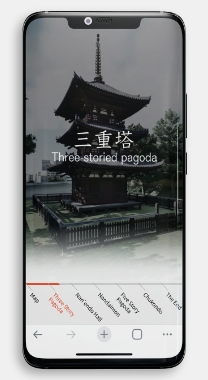
*The screen shown is under development and
may differ from the actual screen.
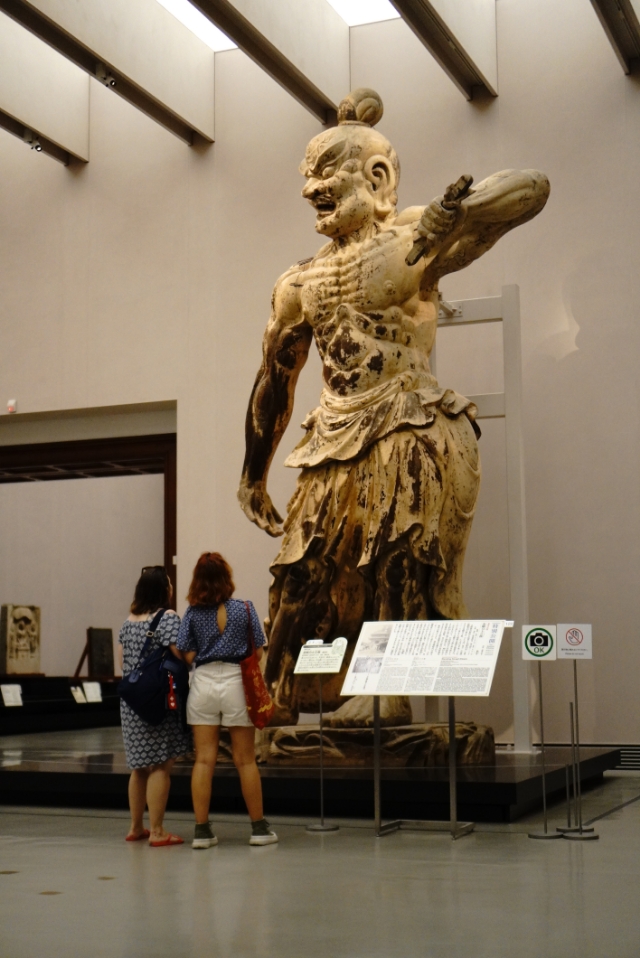
A five-meter standing sculpture of Kongo Rikishi
(Nara: Kinpusenji Temple)
Nara National Museum:
Experience the appeal of Buddhist art
Designated as an Important Cultural Property, the Nara Buddhist Sculpture Hall in the Nara National Museum is a valuable example of authentic Western-style architecture from the mid-Meiji Period. The hall’s exhibitions focus on Japanese Buddhist art, and nearly 100 Buddhist sculptures line the hall. There is an audio guide available for foreign visitors to learn about the sculptures. In particular, a five-meter standing sculpture of Kongo Rikishi (Nara: Kinpusenji Temple) captures the hearts of visitors. Through the art created through the Buddhist faith, we can catch a glimpse of the world that existed behind the religion.
Experience 1,000 years of history at Kasugataisha Shrine and the surrounding primeval forests
Kasugataisha Shrine, where four gods are enshrined, was founded by the Fujiwara clan in 768 on the slopes of the sacred Mikasayama mountain. A large cedar tree about 800 to 1,000 years old stands at the front of the shrine. At the end of the path approaching the shrine stands the main hall, painted in bright vermilion, and the surrounding corridors. “I was deeply moved by the mystical atmosphere,” says Clara, after seeing the rows of stone lanterns. Please enjoy a leisurely visit to the shrine.
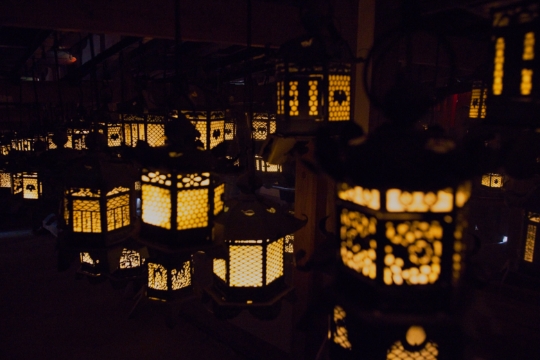
Lanterns at Kasugataisha Shrine’s Fujinaminoya Hall
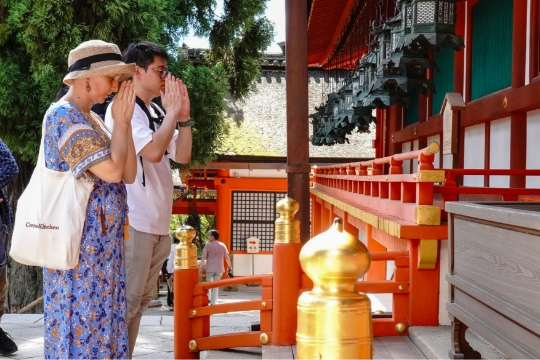
Enjoy a special workshop experience. Make an unforgettable memory of your trip.
A variety of hands-on workshops are available to help visitors enjoy an in-depth experience of Japanese culture.
Wahokudo Tango Tanimura: Making tea whisks
For around 550 years, Wahokudo has continued to preserve the techniques for making chasen, tea whisks that are used in a traditional Japanese tea ceremony. Visitors can learn about the history of the whisks from Tango Tanimura, who is the 20th head of Wahokudo, and enjoy a tea ceremony in the tea room. You can also try threading a whisk. The experience is popular with foreign tourists. “It was a rare and special experience,” says Jessica. We hope that visitors will experience the unique wabi-sabi culture of Japan.
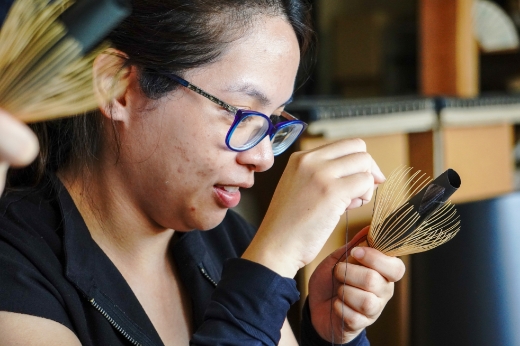
Kinkoen: Making sumi ink
Kinkoen has been preserving the traditions and manufacturing methods of Nara Sumi ink for over 100 years. You can experience making the ink with your hands, which when finished will be a one-
of-a-kind original. Visitors can also take home their Sumi ink in a paulownia wood box as a souvenir. Another wonderful aspect of this experience is an interesting and easy-to-understand explanation on the origins of the ink from an ink craftsman. “We even got to try calligraphy,” reports Elodie with a smile. “It was so much fun!”
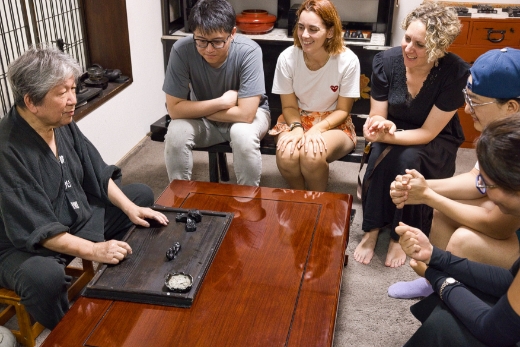
Kohfukuji Temple: Making good-luck charms
Visitors to Kohfukuji Temple can enjoy a workshop on making a good-luck charm. The workshop is taught by Ryukai Kirimura, who has been a monk for about 25 years and now is a deacon of Jurin-in Temple. The workshop is moderated by Zane, a New York native who possesses a deep knowledge of Japanese culture. Participants first rub incense on their palms and wrists, then clasp their hands together to pray for the purification of their hearts. During prayers, the right hand represents Buddha and the left represents themselves.
The Heart Sutra, which expounds the wisdom and guidance of Buddha, is chanted, enchanting the audience with its solemn sound. Once participants have calmed their minds, they are ready to start making their good-luck charms. A good-luck charm combines the power of a mandala, which represents the universe, and the charm’s depiction of Monju, the god of wisdom. The good-luck charm provides protection when carried. Participants also try copying the sutra in which the Mantra of Light is written, putting their heart into every stroke of their brush. The Mantra of Light is said to expound the blessings of jewels, lotus flowers, and light. When participants finish writing the mantra, they receive a seal of completion. The seal is placed in a bag with the good-luck charm together with a kifuda, which is a wooden tag stamped with a name and crest. Finally, participants write their wish and name on a homa (prayer stick), and
have the stick blessed at Kohfukuji Temple.
Kate, Kimie, and Thein participated in the workshop and gave feedback on their meaningful experiences: “Having my name written on the good-luck charm was a special experience.” “Copying the sutra was easy and fun because they gave us a template to follow.” “I was surprised that monks make a seal of completion.”
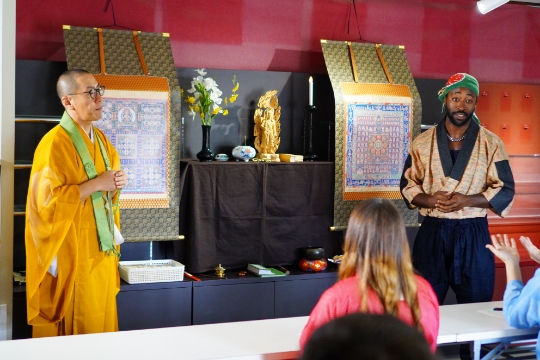
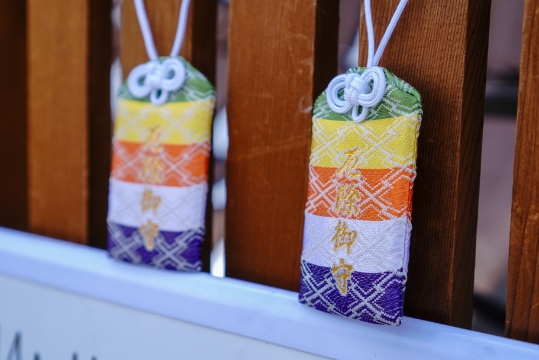
The tour also offers various other activities for visitors to experience the special atmosphere of Nara, which is normally hidden from tourists. “I had unique experiences that are different from the common tourism,” says Niku. We invite you to make some unforgettable memories on this tour.
Japan Arts Council
Agency for Cultural Affairs, Government of Japan

